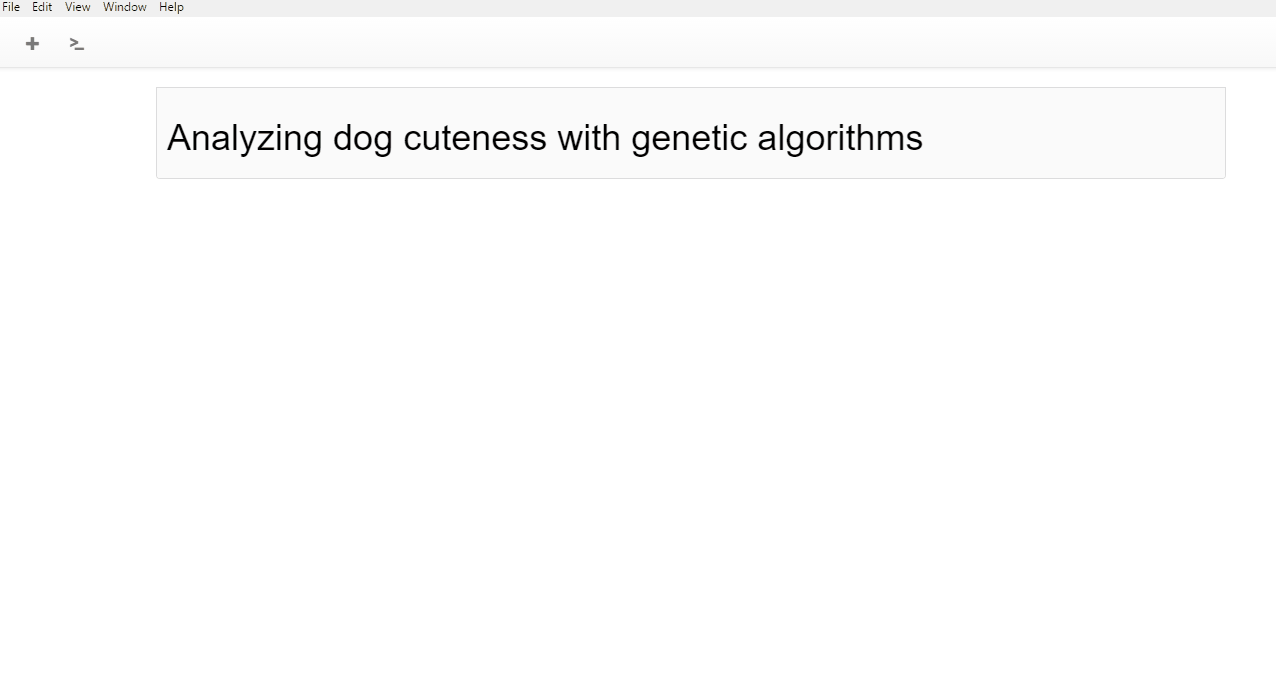(pronounced "Haskell do")
HaskellDO is a Haskell code editor, centered around interactive development.
This is a pre-release version, not expected to be used in production. As a prototype, major changes may be applied in the future that could break backwards compatibility. Pull Requests will be greatly appreciated, check out our contributing guidelines.
The current version is written in Haskell and PureScript, but on next releases we're aiming for a pure Haskell implementation.
The only 3rd-party requirement to run HaskellDO is Stack and NodeJS.
Before proceeding, run a npm install -g purescript pulp bower to install the required NodeJS binaries.
Clone this repository, and from the root of the project run:
make deps for installing the required dependencies, and
make build-all-<platform>
Where <platform> is one of:
windowslinuxosx
Choose accordingly to your platform.
Begin by creating a new Stack project.
stack new your_project_name
Fire up HaskellDO by running make run from the root of the project,
it will ask you to open a Stack project.
Navigate to the root of the project you just created and open that
folder.
Let's begin by adding a text cell for documenting our analysis:
HaskellDO's text editor is based on SimpleMDE for handling the editing and rendering of the "documentation" part of our code.
It supports all the features that you would expect from a normal markdown editor, including image embedding.
- Do a single click out of the editor to render the current text
- Do a double click inside of the editor to come back to the text editing view.
Now, it's time to work with some code, let's insert a code cell. In it, we write regular Haskell code, like we would do in a normal Haskell module.
In fact, our whole page is just a Haskell file that can be used in any Haskell, project. No need to export/import!
Now we have to try our new algorithm we spent hours researching on.
No, we do not have to spawn a stack ghci or a stack repl. HaskellDO
manages that for us and reloads the code each time we ask it to evaluate
some expression.
Just click on the toggle console button and press return on it to enable it.
After writing your expression, press return twice to get the result written on screen.
But, what does our real module file look like? Let's see the contents
of our Main.hs file:
-- # Analyzing dog cuteness with genetic algorithms
--
-- After going **through thorough and tough thoughts**, we decided to use a simple example.
a = [1..20]
b = f <$> a
f :: Int -> Int
f x = x * 3 + 4Just regular Haskell! Ready for deployment!
When you've finished testing HaskellDO, due to a bug, the haskelldo-core
process is left running. Be sure to kill it!
One could also want to build HaskellDO from source:
- NodeJS v6.8.1 or superior
- Stack v1.2.0 or superior
Begin by cloning this repository.
The project is composed of two sub-projects:
- A PureScript front end, residing in
gui - A Haskell back end, residing in
core
For compiling the backend, execute in the root directory:
make build-back-<platform>- This will download the necessary dependencies and build the project.
For compiling the frontend, execute in the root directory:
-
npm install -g bower pulp purescript- This will install:- Bower - A dependency tool used for purescript libraries
- Pulp - A build tool for purescript
- Purescript itself
-
make deps- Installs necessary dependencies for the desktop app -
make build-front- Build the GUI
Wanna contribute? Make sure that you've read our contributor guidelines. We'd like to hear from you and your ideas, get in touch with other contributors through:




